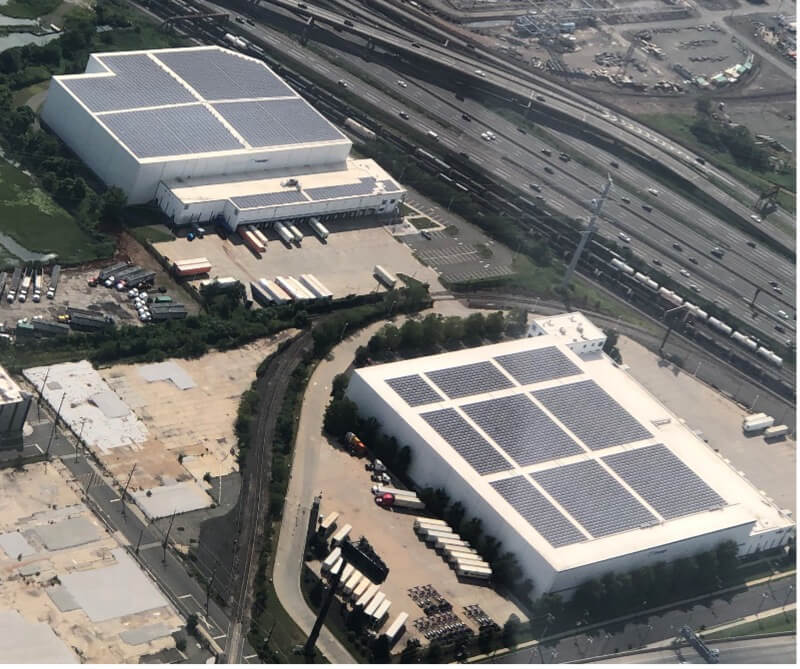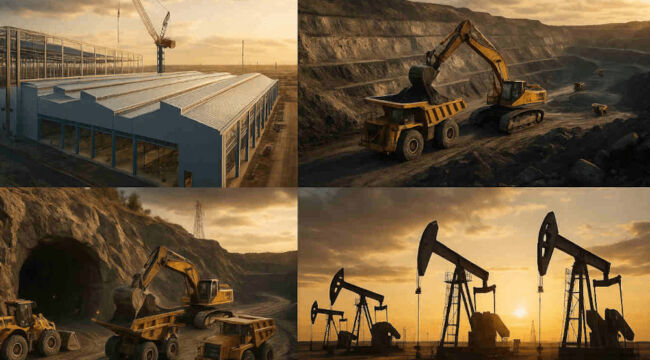Trump’s EPA to Make CO2 Great Again
It’s not often that significant national policy is announced outside of Washington, D.C., let alone outside of a major political address with all the spectacle and theater. But every now and again, something big happens in unusual places.
Consider how, on June 5, 1947, Secretary of State George C. Marshall announced his eponymous Marshall Plan at the Harvard commencement ceremony, in Cambridge, Massachusetts.
Or how on Sept. 12, 1962, President Kennedy gave his “we choose to go to the moon” speech before college students from Rice University, at the school’s football stadium in Houston, Texas.
Well, add July 29, 2025 to the list, and in Indianapolis, Indiana of all places. Even more out of the ordinary, ground zero of the new policy was a Kenworth truck dealership, a place that sells workhorse vehicles designed by “engineers who wear muddy boots,” per the old saying.
The speaker was Lee Zeldin, President Trump’s administrator of the Environmental Protection Agency (EPA), who proposed changing the country in a very big way:

Lee Zeldin, EPA Administrator (left) at Kenworth, announcing major policy change. Indiana Gov. Mike Brain is also shown, at right. Courtesy IndyStar.com
In fact, if things unfold according to what Mr. Zeldin said in Indianapolis, the results will fundamentally change the trajectory of the U.S. economy. Likely, the new policies will affect world commerce in ways that are all but incalculable. You need to know what’s happening, so let’s dive in…
The Politics of Atmospheric Chemistry
I’ll spare you the suspense and go straight to the punchline: this is about carbon dioxide (CO2). In other words, the top guy at EPA just made a huge, policy-oriented announcement about a gas that comprises a tiny 0.0427% of the earth’s atmosphere, or 427 parts per million (ppm). But what a gas, as we’ll discuss in a moment!
Hey, nobody ever talks about molecules of oxygen or nitrogen. Or helium or argon, either, except when the topic comes up because people use helium and argon to make semiconductor chips.
But CO2? Wow, just mention carbon dioxide in certain circles and things can get emotional, and even politically toxic in a hurry. In North America, Europe, and many other locales across the globe, some people want to eliminate CO2 from all human activities, if not somehow ban the molecule entirely.

Climate protesters demonstrate against CO2. Photo by Baumeister.
Here in the U.S., anti-CO2 laws, regulation and public perception is why the country has closed down hundreds of coal-fired power plants in recent decades, which also helps to explain why you might have to live with routine brownouts or blackouts in months and years to come. Plus, among other things displacing CO2 emissions is why you see solar panels on rooftops and former farm fields across the landscape, along with countless windmills.

Solar rooftop panels atop industrial buildings, beneath landing pattern at Newark Liberty International Airport. BWK photo.
Meanwhile, the widespread policy jihad against CO2 is why we have so many electric vehicles (EVs) on the road, with more to come. It’s why California wants to ban internal combustion vehicles in the not-too-distant future, along with many other states pursuing the same goals with similar, anti-CO2 mandates. And eliminating CO2 is why many legacy automakers have completely transformed their product lines, supply chains, and general investment focus.
Plus, when you look at CO2 from another angle, it’s a big part of why the U.S. is engaged in a massive geopolitical struggle with China. The blowback from eschewing CO2 has created a global scramble for access to so-called “battery metals,” and intellectual property for new energy systems, plus numerous other exotic metals and materials.
Okay, you get the picture about CO2, and also that with Zeldin in Indianapolis something big is cooking. So, what exactly happened?
Well, at a July 29 press conference, Trump’s man at EPA announced that his agency would rescind a set of regulations from 2009, from way back during the first year of the Obama administration. Specifically, EPA will remove what’s called an “endangerment finding” on CO2.
Perhaps this seems arcane, and it is. But please… be assured that revising the current, EPA-driven regulatory approach to CO2 is of critical importance to the U.S. economy. According to Zeldin, current policies on CO2 have led to over a trillion dollars per year of regulatory burden on the U.S. economy, and it’s time to reboot the governmental approach.
“In our work so far,” said Zeldin, “many stakeholders have told me that the Obama and Biden’s EPAs twisted the law, ignored precedent, and warped science to achieve their preferred ends and stuck American families with hundreds of billions of dollars in hidden taxes every single year.”
Is CO2 Really “Pollution?”
The underlying law is the 1963 Clean Air Act (CAA), periodically amended over the decades. It was first passed in the old “smokestack” days of America, when pretty much anybody could burn pretty much anything and blow the effluent out into the sky. Indeed, I’m old enough to recall the massive steel mills on the riverbanks of Pittsburgh, belching smoke into the sky.
With the CAA, the idea was to regulate emissions of particulates and pollutants. And again, I’ll skip ahead to the central question here, based on Zeldin in Indianapolis: is CO2 “pollution” under the CAA, and subject to EPA regulation? Because this is what the proposal is all about.
Looking back 60 years, there’s no question that the CAA helped clean up America’s air. Under this law and related regulations, many sources of air emissions and pollution were controlled or eliminated. For example, the air is much cleaner around power plants, steel mills, oil refineries, factories, and much else. And in certain ways, control over pollution also includes tailpipe emissions from cars, trucks, aircraft engines, rail equipment and ships, which is why there is no longer sulfur or tetra-ethyl lead in motor fuels.
But what’s the deal with regulating CO2? What is EPA’s role? At root, is CO2 really a form of pollution? Because after all, it’s just a molecule of gas, found everywhere on earth and even across the universe. It’s “plant food,” people like to say, which is absolutely true science!
Of course, CO2 is a combustion product of human activities, but again, it’s also quite natural. We find CO2 in natural gas deposits, for example, as well as emitting from volcanoes. Or consider how the planet Venus holds an atmosphere comprised of 96.5% CO2, and 3.5% nitrogen.
But we’re not talking about Venus, we’re talking about Earth, specifically the U.S. and its voluminous, oft-turgid body of “clean air” law. And out of this political-legislative-regulatory-legal morass, many people make long, lucrative careers dealing with CAA issues which can be quite technical and complex. Indeed, one will find many long books on the topic, so let’s distill it down to the essence of what’s going on.
For our purposes, the story begins in 2003, under President George W. Bush. Back then, EPA determined that it lacked authority under the CAA to regulate CO2 with respect to any role it might play as a so-called “greenhouse gas,” with reference to how CO2 does or does not contribute to so-called “global warming.” Plus, said EPA, even if it did have such authority under the CAA, it would not regulate CO2 emissions from vehicle tailpipes.
In short, this 2003 EPA approach was a political balance. The agency juggled an evolving scientific approach to CO2’s role in planet-scale atmospheric chemistry, plus the emotional-political issue of global warming. And on the other side of the ledger were very real, broad economic issues rooted in the fact that we exist in humanity’s industrial age, and people everywhere, in every nation process and burn fossil fuels in large quantities.
Again, to keep the story short, after EPA declined to regulate CO2 emissions from vehicle tailpipes, the agency was sued. Plaintiffs were a group of states, cities, and environmental groups; defendants were EPA and a long list of automobile-related groups and organizations, and several other states.
The shorthand version of the case is called Massachusetts v. Environmental Protection Agency, eventually decided at the Supreme Court, reference 549 U.S. 497 (2007). The decision was one of those wonderful 5-to-4 outcomes, with the usual suspect liberals voting that CO2 can be regulated by EPA as a pollutant, and the other usual suspects saying no it cannot be regulated.
One critical issue at the outset was whether or not the plaintiffs had what’s called “standing.” That is, the case didn’t involve any actual, tangible legal “harm” as it’s called under the law. Oh sure, Massachusetts claimed that rising sea levels will someday flood the state, but this was not your typical case where anyone could show direct, immediate injury.
So, the first question was whether or not it was proper for the Supreme Court to make any sort of decision at all. Or, should the case be dismissed and the issue referred back to Congress, explicitly to legislate new regulatory power over CO2 to the EPA.
In fact, this was one of those cases that occasionally get to the Supreme Court in an effort to make national policy from the bench, so to speak, versus in the halls of Congress. The plaintiffs’ claims in the pleadings involved the scope of EPA’s power under the CAA. In essence, Plaintiffs said that CO2 is pollution; EPA said that the CAA did not give it power to regulate CO2 as pollution.
Well, the Supreme Court said that yes, EPA could regulate CO2 as pollution, and then the Court remanded the case back to the agency, which did nothing until 2009, meaning when President Obama and his appointees took over.
With the Supreme Court decision about “pollution” in hand, Obama’s EPA went to work and made two important “findings” in December 2009.
The first finding was that “current and projected concentrations” of certain gases in the atmosphere, including carbon dioxide, threatened public health and welfare.
The second finding was that the combination of CO2, plus other emissions from motor vehicle engines, contributed to greenhouse gas pollution.
These findings are based on just enough science to seem scientific; but in many other ways they are speculations by political actors with deep agendas. And we’ll refrain from delving into the weeds, other than to say that these two findings laid the foundation for EPA to implement so-called “greenhouse gas emissions standards” for vehicles and many other sectors of the economy.
According to EPA’s Zeldin, “There are people who, in the name of climate change, are willing to bankrupt the country. They created this endangerment finding and then they are able to put all these regulations on vehicles, on airplanes, on stationary sources, to basically regulate out of existence, in many cases, a lot of segments of our economy.”
Indeed, since 2009 the “endangerment findings” have underpinned massive, voluminous environmental regulations, especially on the transportation industry, from tailpipe emissions to electric vehicle mandates. And at many state levels, the EPA approach has become a template for further regulation, such as in some jurisdictions where politicians and bureaucrats ban gasoline powered lawnmowers or even gas-fired furnaces and cooking stoves.
If you are wondering why the U.S. deindustrialized so much, and why even buying a car has become such a bizarre, expensive event in life, this is part of the answer.
No doubt, the environmentalist side will fight tooth and nail against Zeldin and his proposed repeal of the endangerment findings. The political and media fireworks will be over the top. And it will all unfold in its own time because first, EPA must place its proposal in the Federal Register; and then, it will undergo a long review process before being finalized as a rule.
Still, it’s worth knowing that there’s a new policy coming down the tracks regarding the EPA and CO2. It will affect things up, down, and all across the economy, from extractive industries to energy generation, supply chains, manufacturing, transport and even what kind of lawnmower you use to cut the grass.
To sum things up in a short sentence, the Zeldin proposal is bullish for traditional forms of energy, and not so good for the “green new scam” part of the economy, which carpet-bagged on the EPA’s anti-CO2 policy of the past 16 years.
And with that, I’ll call it quits for now. Thank you for subscribing and reading…



Comments: